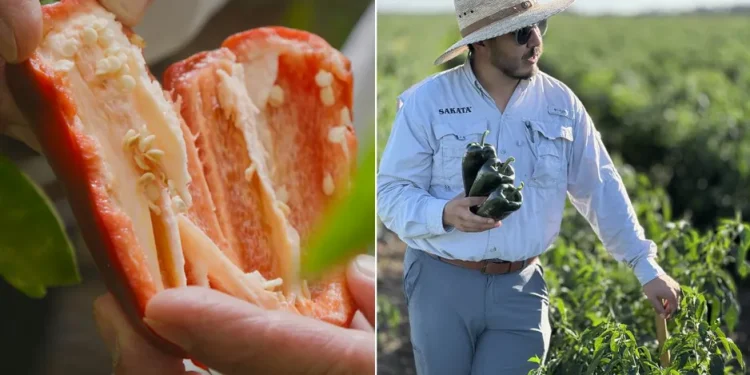Exploring the Factors Behind the Increasing Popularity of Hot Peppers
In recent years, there has been a significant rise in the consumption of hot peppers across the globe. This trend can be attributed to a combination of evolving consumer preferences, increased availability, and the influence of food culture. Salvador Hurtado, Hot Pepper Product Manager at Sakata Seed, provides insights into this burgeoning market and highlights key opportunities for growers and industry professionals.
Growing Consumer Demand for Hot Peppers
The demand for hot peppers has surged due to a growing interest in spicy foods and diverse culinary experiences. According to Hurtado, “More people are developing a taste for spicy food, which has led to a steady increase in the everyday consumption of hot peppers.” This trend is particularly evident in households embracing a variety of culinary traditions, where hot peppers are used in a range of dishes from jalapenos on pizzas to salsas for special occasions like Superbowl Sunday.
Food Shows and Media Influence: The popularity of food shows dedicated to spicy foods has also played a crucial role in driving this trend. These programs often feature unique recipes and spicy food challenges, inspiring viewers to experiment with hot peppers in their own kitchens.
Consumer Preferences: Modern consumers are seeking peppers that offer a balance of heat, visual appeal, and long shelf-life. “Consumers are looking for peppers with the right Scoville Heat Units (SHU) to match their taste preferences,” says Hurtado. “Larger peppers are preferred for their ease of handling, and bright, vibrant colors are associated with freshness and quality.”
Increased Availability and Varietal Diversity
The rise in hot pepper consumption has been supported by increased availability and a diverse range of varieties. Sakata Seed has focused on breeding new hot pepper strains to meet this demand. “Our efforts to develop a range of peppers, from mild to extremely hot varieties, cater to both spice enthusiasts and newcomers to spicy foods,” explains Hurtado.
Key Varieties:
- XHP 8440 Anaheim Pepper: This variety is designed for dry and hot climates with a high yield potential and tolerance to blossom end rot. It is set to be available in the Desert Southwest of the U.S. and key regions in Mexico.
- Corsario XHP 1982 Poblano Pepper: Launching this summer, this poblano pepper boasts 95 percent two-lobed fruit and Pc resistance. It is expected to be a major success in the fresh market, particularly on the East Coast of the U.S.
Opportunities for Growers and Industry Professionals
For growers and industry professionals, the increasing demand for hot peppers presents several opportunities and challenges:
High Yield and Disease Resistance: Growers are focusing on varieties with high yield potential and resistance to diseases. “High yield directly impacts profitability, and disease-resistant varieties are essential for maintaining healthy crops,” says Hurtado.
Ease of Harvesting: Peppers that are easier to harvest can help reduce labor costs and improve efficiency. Growers must balance this with other traits like shelf-life and resistance to ensure maximum return on investment.
Product Development: Companies are encouraged to explore new pepper varieties and invest in advanced breeding techniques. The success of varieties like XHP 8440 and Corsario XHP 1982 underscores the importance of developing products that meet both consumer demands and grower needs.
Market Adaptation: Industry professionals must adapt to the evolving preferences of consumers and leverage media influences to boost the appeal of hot peppers.
































